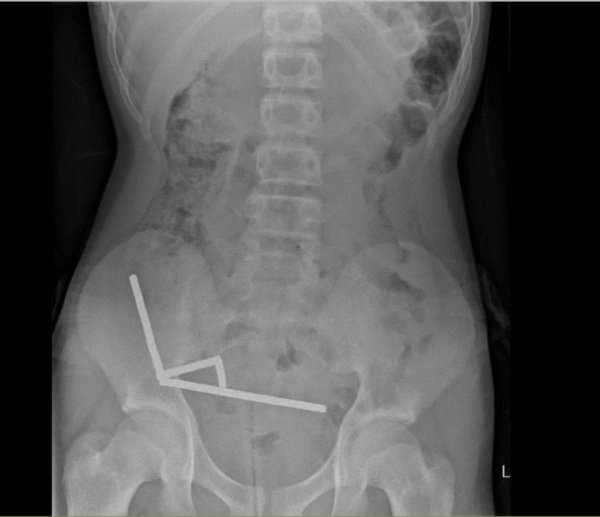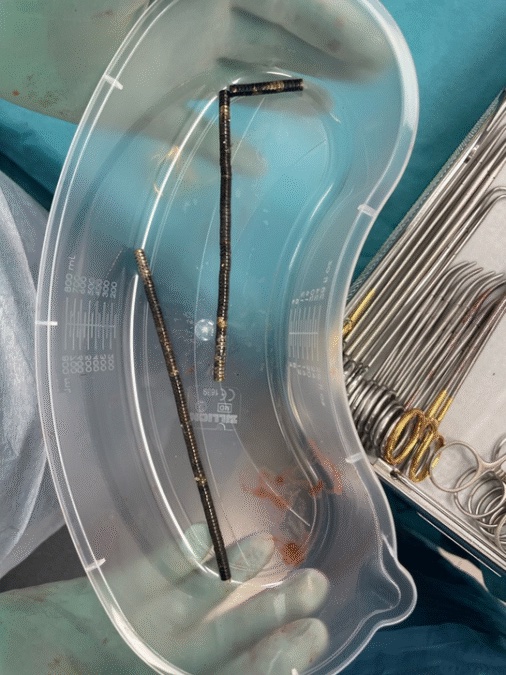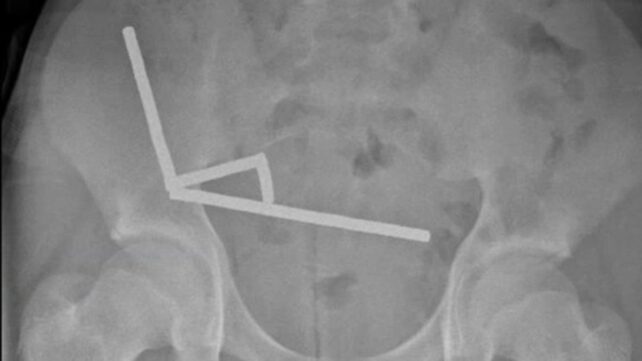A 13-year-old boy in New Zealand has had part of his bowel surgically removed after he ingested nearly 200 high-powered magnets.
According to a recent case report, the child presented to Tauranga Hospital with abdominal pain, and he admitted to having swallowed possibly 100 neodymium magnets roughly a week prior. The actual number retrieved from his abdomen ended up being much higher.
Related: Kids Keep Eating Magnets, And Surgeons Say There's Only 1 Way to Stop It
Inside his body, the small metal objects came together in a destructive way.
Using an X-ray, doctors imaged four linear chains in separate parts of the boy's bowel.

During surgery, the chains were found in sections of the small bowel and caecum. Squeezing together, they were causing several patches of tissue to die from a lack of blood in what is known as pressure necrosis.
Though the surgeons were forced to remove part of his bowel, the adolescent recovered well and was discharged eight days later.

"As this case study shows, ingesting small high-powered magnets is life-threatening," says commercial law researcher Alex Sims from the University of Auckland.
"Small high-power magnets have been marketed and sold as fun toys for adults and children when they are sold in sets, as they can be used to make different shapes and also be used as fidget toys. Unfortunately, they often come as brightly colored small balls, making them attractive for children to swallow."
The reason the teen swallowed the magnets was not explained in the report.
Recently, government officials in New Zealand warned of a trend on social media where kids are encouraged to use magnets to create tongue, nose, or lip piercings. These can be accidentally swallowed with dangerous consequences.
In 2013, after a series of hospitalizations due to magnets, New Zealand government officials permanently banned the sale of those made from neodymium-iron-boron (NIB). These are known as 'rare earth magnets', and they are up to 50 times stronger than typical ferrous ones.
The 13-year-old treated at Taurang Hospital told doctors the magnets he swallowed were purchased from the overseas online marketplace Temu.
Doctors on his case say it is "alarming" how hard it is to actually enforce New Zealand's ban.
"While enforcement is problematic, as it is more difficult for the Commerce Commission to investigate and force overseas online marketplaces to stop the sale of small high-powered magnets, it is concerning if children are purchasing goods on online marketplaces," says Sims.
"Parents should not be allowing their children to purchase items unsupervised on any online marketplaces; all purchases must be done or at least overseen by parents."
Even when parents are vigilant, mistakes can happen. In 2024, a young New Zealander swallowed two rare earth magnets at a birthday party.
"When the doctors took the X-rays of her, it was easy to see the magnets had connected to each other," her mother said.
"However, one had passed into the intestine, and the other had stayed in her stomach. The magnetic pull had caused them to connect through the tissue and caused a tear in her stomach. This meant my daughter had to undergo emergency surgery."
If a young person is suspected of having swallowed a magnet, officials say it is vital that they are taken to the hospital as soon as possible. More than 75 percent of patients will require surgery or an endoscopy.
"Accessibility to high-power magnets is a rising concern for our pediatric population," write surgeons at Tauranga Hospital.
The case study was published in The New Zealand Medical Journal.

